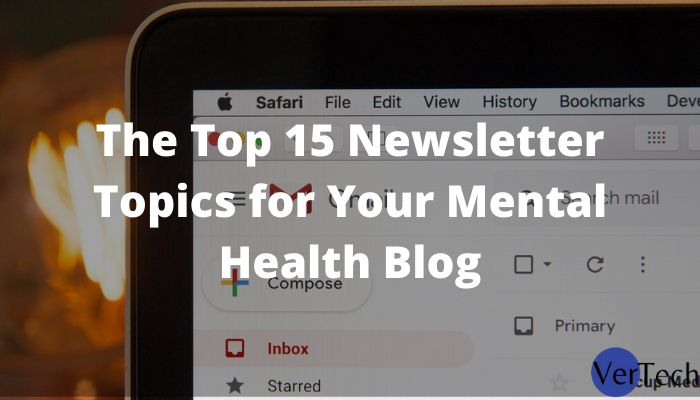Health
How To Support Mental Well-Being with Employee Assistance?

It can be difficult to combat the stigma attached to mental health problems in the workplace. Many people harbour unconscious prejudices regarding mental health concerns, which can harm an employee’s wellness and result in major workplace issues like discrimination. Furthermore, people who experience mental health problems at work may decide not to discuss their struggles with others for fear of being viewed as weak or unable to carry out their professional responsibilities, which can prevent them from getting the support they need. If you’re running a company, then you should choose to provide an EAP employee assistance program for your employees to ensure their safety.
Increasing employee support for their physical, emotional, and overall well-being has several advantages. In what way are you able to provide this support? Here are some easy ways to accomplish this:
Recognize The Effects Mental Health Has On Your Staff
Some workers require others in their immediate vicinity to notice that they appear to be under stress. Perhaps now would be an excellent opportunity to go for a stroll or attempt some breathing exercises.
The following are proactive actions you can do to comprehend and evaluate the mental health of your staff members:
- Make mental health education required for executives in your organization to increase their understanding of and commitment to this facet of workers’ well-being.
- Teach managers what to do if they notice indications of substance addiction or emotional distress.
- Utilize psychological wellness calculations to determine the frequency and related expenses of untreated depression, alcoholism, and drug misuse in your place of employment.
Make Mental Health Options Available, Including Coaching And EAPS
Employee benefits programs called employee assistance programs, or EAPs, are made to aid staff members in resolving problems that may influence their lives. The goal is to deal with individual issues before they become a hindrance to productivity at work. Even though EAPs are beneficial and greatly reduce attendance and work-related anxiety at companies that provide them, they are sadly underutilized. Research indicates that less than 10% of people use EAPs.
Spend Money On Instruction
It is more important than ever to give managers, supervisors, and individuals who contribute proactive and preventative workplace mental health training. Before the epidemic, organizations such as Verizon Media and Morrison & Foerster were bringing together senior executives to talk about their part in fostering a culture of mental wellness. They were in a good position to handle the resulting uncertainties as a result.
With the growing number of workers experiencing mental health issues, it’s critical to dispel stereotypes, lessen stigma, and acquire the skills needed to conduct fruitful discussions addressing mental healthcare at work. Mental health resource groups for workers are an inexpensive approach to raising awareness, fostering a sense of community, and providing peer support if you don’t have the funds for training.
Give Up Multitasking
Instead of boosting worker efficiency, multitasking decreases it. It is harder for your staff to focus on what they are currently doing while they are multitasking, especially when reading emails while returning calls. Urge the group members to focus on a single task at a time.
Strive For A Work-Life Balance
We’re all susceptible to working late into the night and reading emails on the weekends. However, trying to make this look normal will just increase the tension and burnout of your staff.
Offering flexible work schedules or a hybrid employment arrangement, promoting frequent breaks for brief periods, reviewing staff members’ workloads, and experiencing administrators place more emphasis on output as well as efficiency compared to on hours worked are just a few ways you can support your staff in striking the right work-life balance.
Provide Mental Health Education
It is insufficient to have access to mental health and therapeutic assessment services. Employees frequently ask to receive instruction on where to go as well as how to make use of these services, even if you address mental and behavioural health issues. Managers should learn how to recognize the symptoms of anxiety, depression, and various other prevalent mental health issues and how to act appropriately when necessary. It can be less stressful to keep lines between conversations open without their management if they don’t want other team members to “find out” about the struggles they’re about to go through.
Final words
If workers have not established powerful, advantageous connections within their jobs, they are more susceptible to negative consequences of stress both within as well as outside of their workplace,” according to experts.
Read Also: What Are the Purpose of Pre-Employment Medical Exams?
-
Blog1 year ago
MyCSULB: Login to CSULB Student and Employee Portal – MyCSULB 2023
-
Android App3 years ago
Cqatest App What is It
-
Android1 year ago
What Is content://com.android.browser.home/ All About in 2023? Set Up content com android browser home
-
Software2 years ago
A Guide For Better Cybersecurity & Data Protection For Your Devices
-
Latest News2 years ago
Soap2day Similar Sites And Alternatives To Watch Free Movies
-
Android2 years ago
What is OMACP And How To Remove It? Easy Guide OMACP 2022
-
Android3 years ago
What is org.codeaurora.snapcam?
-
Business2 years ago
Know Your Business (KYB) Process – Critical Component For Partnerships























